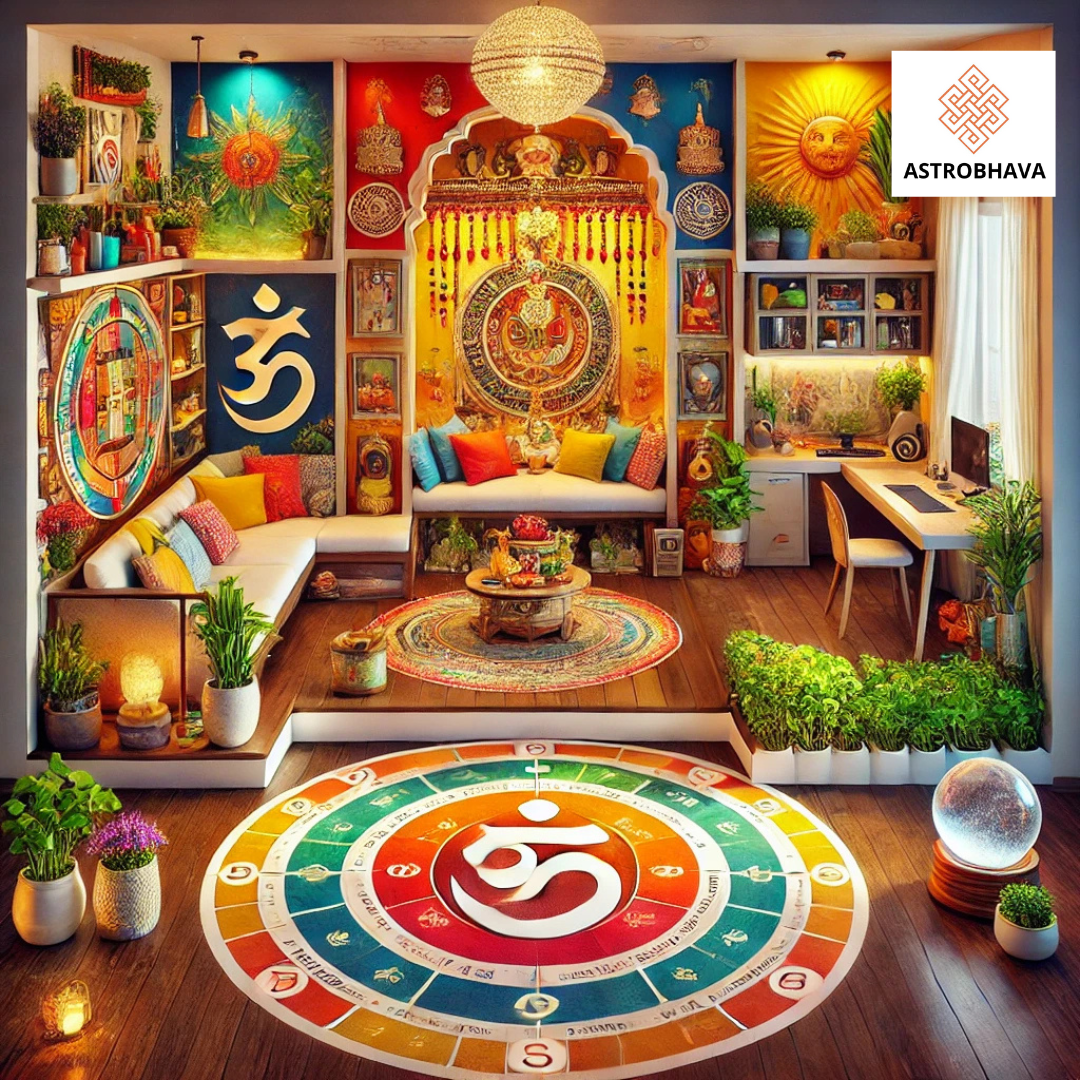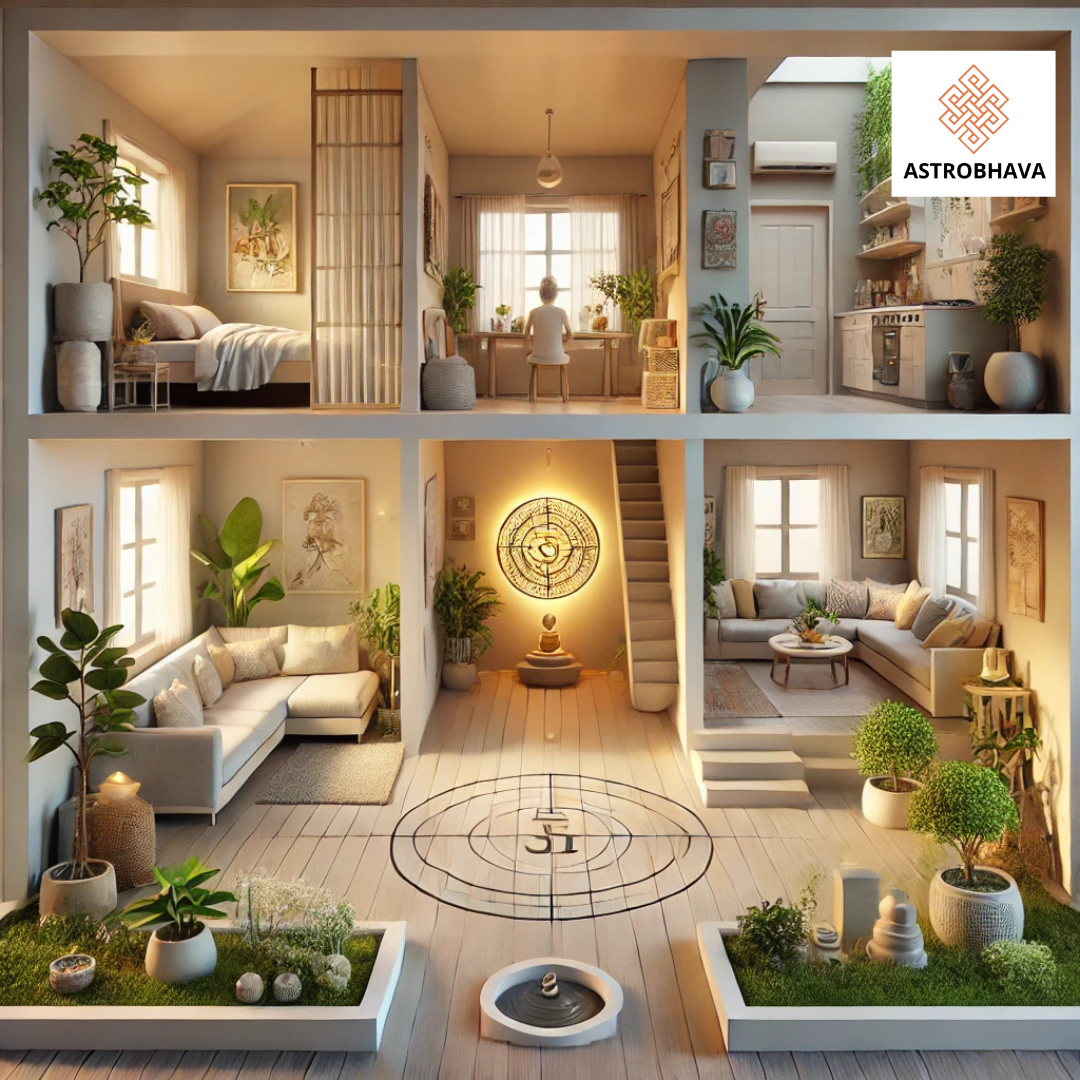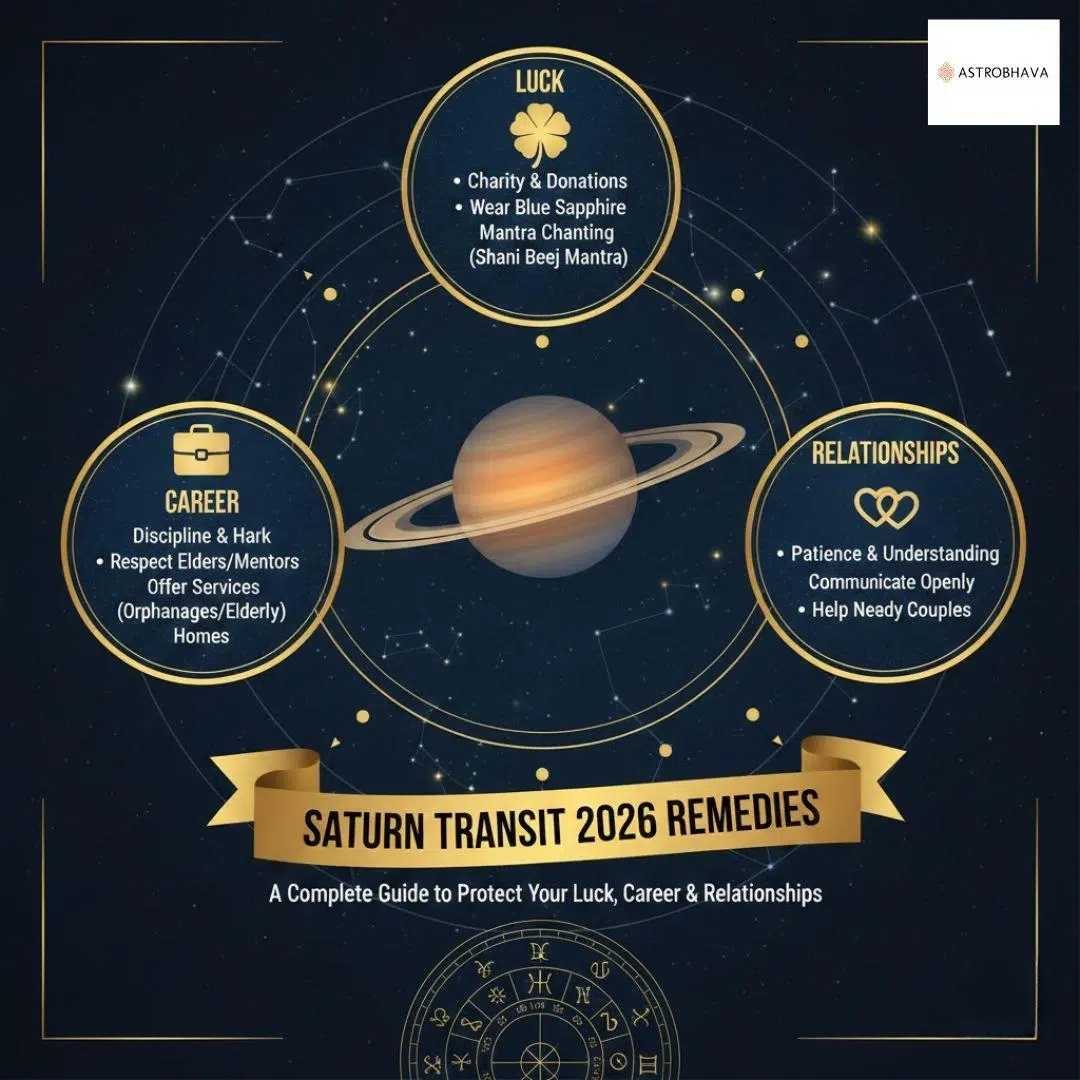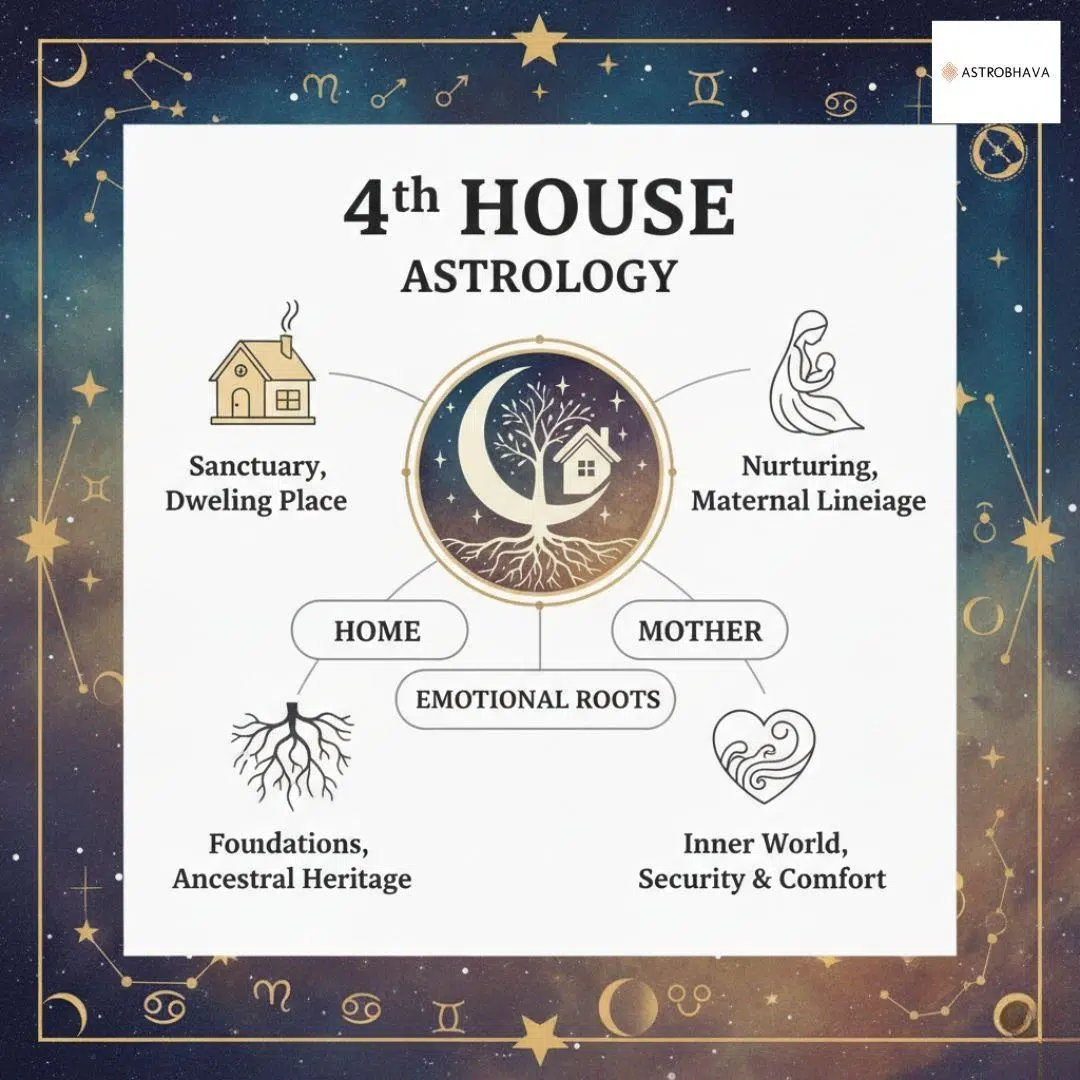Vastu Shastra for Home: Top 10 Tips for a Peaceful Abode

Vastu Shastra, an ancient Indian science of architecture and design, offers valuable guidelines for creating a harmonious living space. By balancing energies and aligning your home with nature’s forces, you can ensure peace, prosperity, and positivity in your abode. In this blog, we will explore Vastu Shastra for home, its principles, and practical tips to enhance your living environment. Whether you’re in the USA or anywhere else, these principles are universal and can be applied globally.
What is Vastu Shastra for Home?
Vastu Shastra for Home is a traditional Indian architectural science that seeks to create harmonious and balanced living spaces by aligning them with the laws of nature. Derived from ancient texts, it integrates architectural principles with the elements of the universe, such as earth, water, fire, air, and space. The ultimate goal of Vastu Shastra is to ensure that a home provides peace, prosperity, and positive energy for its occupants. Here’s a detailed breakdown:
Key Principles of Vastu Shastra for Home
- The Five Elements (Panchabhutas)
Vastu Shastra emphasizes balancing the five elements that influence life:- Earth (Bhumi): The foundation and physical structure of the home.
- Water (Jala): Reflects emotions and connectivity; placement of water bodies is crucial.
- Fire (Agni): Represents energy, power, and illumination.
- Air (Vayu): Governs movement and freshness.
- Space (Akasha): Represents the cosmos and infinite potential.
- Harmonizing these elements with proper placement and orientation ensures a balanced home environment.
Directional Guidance in Vastu
Each direction in Vastu Shastra is associated with specific energies and benefits:
- North (Kubera): Governs wealth and prosperity. Ideal for cash storage or a home office.
- East (Indra): Represents health and growth. Suitable for main entrances or windows to allow sunlight.
- South (Yama): Associated with strength and stability. Avoid placing the main entrance here.
- West (Varuna): Governs gains and opportunities. Ideal for dining rooms or storage areas.
Additionally, the sub-directions (northeast, southeast, northwest, and southwest) have specific significance.
Benefits of Vastu Shastra for Home
- Enhanced Positivity: Balances energy flow, creating a serene and uplifting environment.
- Health and Well-being: Proper orientation of spaces ensures better physical and mental health.
- Financial Prosperity: Aligns the home with energies that attract wealth and success.
- Harmonious Relationships: Encourages peace and understanding among family members.
- Spiritual Growth: Supports a deeper connection with nature and the divine.
Modern Adaptations of Vastu Shastra for home
With urbanization and space constraints, traditional Vastu guidelines have been adapted to suit contemporary architecture. Even small changes, such as the placement of mirrors, furniture, or lighting, can make a significant difference. Incorporating plants, crystals, and colors as per Vastu can also enhance energy flow in modern homes.
Why is Vastu for Home in USA important?
Vastu for Home in USA has gained significant importance as people seek harmony, balance, and prosperity in their living spaces, regardless of cultural or geographical boundaries. While the principles of Vastu Shastra for home originate from India, they are universally applicable, making them relevant in homes across the USA. Here’s why Vastu is important for homes in USA:
1. Creating Harmony with Nature
- Vastu aligns the home with the natural elements (earth, water, fire, air, and space), ensuring a balanced environment.
- In the USA, where homes are often surrounded by diverse landscapes, Vastu can help homeowners integrate their spaces with the surrounding natural energy.
2. Enhancing Positivity in Modern Homes
- Many American homes are designed without consideration of energy flow, leading to spaces that feel chaotic or imbalanced.
- By applying Vastu principles, homeowners can invite positivity, reduce stress, and create a peaceful atmosphere in their homes.
3. Promoting Health and Well-being
- In a fast-paced culture like the USA, Vastu shastra can contribute to better mental and physical health.
- Proper placement of rooms, furniture, and décor can enhance natural light, ventilation, and comfort, promoting a healthier lifestyle.
4. Supporting Financial Success
- Many in the USA adopt Vastu for its association with prosperity and financial stability.
- Aligning offices, home offices, or workspaces with Vastu principles can enhance focus, productivity, and opportunities for growth.
5. Adapting to Multicultural Lifestyles
- The USA is home to diverse cultures, and Vastu principles resonate with universal concepts of energy and balance.
- People from various backgrounds can embrace Vastu as it transcends religious or cultural boundaries, focusing purely on energy and design.
6. Suitable for Modern and Urban Homes
- Modern American homes, whether apartments, townhouses, or sprawling estates, can incorporate Vastu with small adjustments like the placement of furniture, mirrors, or entrances.
- Even limited spaces can benefit from Vastu through proper use of colors, lighting, and layout.
7. Rising Awareness of Holistic Living
- With increasing awareness of wellness practices like yoga, meditation, and Ayurveda in the USA, Vastu naturally complements these holistic approaches.
- Many homeowners view Vastu shastra as an extension of their wellness journey, integrating it into their lifestyles.
8. Attracting Peaceful Relationships
- Vastu fosters harmony among family members by ensuring a balanced energy flow.
- In the USA, where fast-paced lives often strain relationships, a Vastu-compliant home can provide a sanctuary for connection and understanding.
9. Enhancing Real Estate Value
- Homes that follow Vastu principles are increasingly sought after, especially in regions with a large South Asian population.
- A Vastu-compliant home is considered an asset, potentially increasing its market appeal and value.
10. Universal Applicability of Energy Principles
- Vastu shastra is not limited by geography; its principles are based on universal laws of energy flow, directions, and elements.
- In the USA, where the compass directions and natural elements are the same, Vastu remains effective in creating balanced and prosperous living spaces.
Top 10 Vastu shastra for home Tips for a Peaceful Abode
Here are the Top 10 Vastu shastra for home Tips for a Peaceful Abode to ensure harmony, positivity, and prosperity in your home.
1. Ideal Main Entrance Placement
- The main entrance is the gateway for energy.
- Place it in the north, northeast, or east direction to invite positive vibrations.
- Keep the area clean, well-lit, and free from clutter.
2. Harmonize the Living Room
- The living room should be in the north, east, or northeast direction.
- Arrange furniture so that it doesn’t obstruct free movement and energy flow.
- Use light, calming colors to create a welcoming ambiance.
3. Choose the Right Direction for Bedrooms
- The master bedroom should be in the southwest direction for stability and restful sleep.
- Avoid bedrooms in the northeast corner, as they may lead to mental unrest.
- Position the bed so that your head faces south or east while sleeping.
4. Kitchen Placement for Health and Energy
- The kitchen should be in the southeast direction, representing the fire element.
- Avoid kitchens in the northeast or southwest corners to prevent health and financial issues.
- Place the stove to ensure the cook faces east while cooking.
5. Sacred Space for Pooja Room
- The pooja (prayer) room should be in the northeast direction, which is highly auspicious.
- Keep it clean and clutter-free, and avoid placing it next to bathrooms or kitchens.
6. Balanced Bathroom Placement
- Bathrooms should ideally be in the northwest or southeast direction.
- Avoid bathrooms in the northeast or center of the home, as they can disrupt energy flow.
- Ensure proper ventilation and keep doors closed when not in use.
7. Declutter and Organize
- Clutter blocks energy flow and creates stress.
- Regularly clean and organize all rooms, including closets, storage, and under the furniture.
- Donate or discard unused items to maintain a fresh and open environment.
8. Enhance Natural Light and Ventilation
- Allow natural light to flow through windows, especially in the east and north directions.
- Ensure proper ventilation to maintain fresh air circulation.
- Use sheer curtains to maximize sunlight during the day.
9. Colors to Promote Peace
- Choose calming and neutral tones for walls and décor, such as white, cream, light blue, or pastel green.
- Avoid dark or overly bold colors in bedrooms and living areas as they can create tension.
- Incorporate Vastu-approved colors for specific rooms to enhance their energy.
10. Use Plants and Décor Wisely
- Place indoor plants like bamboo, money plants, or tulsi (holy basil) in the home to purify air and energy.
- Avoid thorny plants like cactus or dried flowers, as they symbolize negative energy.
- Decorate with symbols of positivity, such as mirrors (in the correct placement), lamps, or water fountains in the north or east.
Bonus Tip:
- Regularly light a diya (lamp) or incense in the morning and evening to maintain a positive and serene atmosphere.
Vastu shastra Remedies for Common Issues
Here are Vastu remedies for common issues to harmonize energy in your home and resolve challenges related to health, finances, relationships, and more:
1. Remedy for Financial Problems
- Placement of Locker or Safe:
Place it in the southwest corner of the house and ensure it opens toward the north or east. - Aquarium or Water Fountain:
Place an aquarium or water fountain in the northeast corner to attract wealth and prosperity. - Keep the North Zone Clean:
Avoid clutter in the north direction, as it is associated with financial growth.
2. Remedy for Health Issues
- Sleeping Position:
Sleep with your head toward the south or east to promote restful sleep and good health. - Avoid Clutter in the Northeast:
Keep the northeast corner of your home open and clean, as it influences mental clarity and health. - Salt Bowls for Negativity:
Place a bowl of rock salt in the corners of rooms to absorb negative energies and improve health.
3. Remedy for Relationship Issues
- Placement of Bedroom:
The master bedroom should be in the southwest direction to foster stability in relationships. - Avoid Mirrors in the Bedroom:
Mirrors reflecting the bed can cause misunderstandings between partners. Cover them at night. - Pink or Red Décor:
Use soothing pink or light red tones in the bedroom to enhance love and intimacy.
4. Remedy for Career Growth
- Study or Work Desk:
Face the north or east while studying or working to enhance focus and opportunities. - Wind Chimes:
Hang wind chimes in the north zone to invite career growth and positive energy. - Avoid Clutter in the North Zone:
Keep the north direction tidy, as it governs career prospects.
5. Remedy for Lack of Peace and Harmony
- Pooja Room Placement:
Place the pooja (prayer) room in the northeast corner to foster peace and spiritual growth. - Burn Incense or Diyas:
Light incense or oil lamps in the morning and evening to purify the home’s energy. - Sandalwood Aroma:
Use sandalwood or other calming scents to create a peaceful atmosphere.
6. Remedy for Negative Energy
- Salt Water Cleaning:
Mop the house with salt water once a week to cleanse negative energy. - Camphor Remedy:
Burn camphor regularly to purify the environment and remove negativity. - Mirrors in the Right Place:
Avoid placing mirrors directly opposite the main door, as they can reflect positive energy out.
7. Remedy for Delay in Marriage
- Southwest Bedroom for Eldest Daughter:
If there’s an unmarried daughter in the house, assign her a southwest bedroom. - Remove Thorny Plants:
Avoid keeping thorny plants like cactus in the home, as they hinder relationships. - Keep Tulsi Plant:
Place a tulsi (holy basil) plant in the northeast for harmonious relationships.
8. Remedy for Children’s Academic Performance
- Study Room Placement:
The study room should be in the north or east direction for better concentration. - Proper Study Desk:
The study table should not face a blank wall; place it so the child faces north or east while studying. - Crystal Globe:
Keep a crystal globe on the study table to enhance focus and learning.
9. Remedy for Frequent Conflicts at Home
- Family Photos:
Hang family photos in the southwest corner to strengthen relationships. - Avoid Broken Items:
Remove broken furniture, clocks, or appliances, as they symbolize stagnancy and conflict. - Soft Music:
Play soothing music or mantras to create a harmonious environment.
10. Remedy for Home Energy Imbalance
- Clear the Center (Brahmasthan):
Keep the central area of the home clutter-free to allow energy to flow freely. - Placement of Plants:
Keep healthy, green plants like bamboo or money plants to boost positive energy. - Use of Colors:
Incorporate light and soothing colors like white, cream, or pastel shades to balance energy.
Bonus General Remedy:
- Swastik or Om Symbol:
Draw a Swastik or Om symbol on the main door or walls to attract positive vibrations and spiritual energy.
“Perform Vastu Homa and Attract Positive Energy to Your Home!”
Which Vastu shastra is Good for a House?
A Vastu-compliant house aligns with the natural elements and directions to create a balanced and harmonious living space. Here are key aspects to ensure good Vastu for a house:
1. Main Entrance
- The main entrance is the gateway for positive energy.
- Best Directions: North, northeast, or east-facing entrances are considered most auspicious.
- Avoid: South and southwest entrances unless remedial measures are taken.
- Keep the entrance clean, well-lit, and clutter-free.
2. Living Room
- The living room should ideally be in the north, east, or northeast direction.
- Arrange furniture to promote free movement and ensure proper ventilation and light.
- Use calming colors like white, cream, or light pastels for walls and décor.
3. Kitchen
- The kitchen represents the fire element.
- Ideal Location: Southeast direction.
- The cook should face east while cooking.
- Avoid: Northeast (can disturb health) and southwest (can affect finances).
4. Bedrooms
- Master Bedroom: Southwest direction for stability and restful sleep.
- Children’s Bedroom: Northwest or west direction.
- Guest Bedroom: North or northwest direction.
- Avoid: Northeast for bedrooms, as it can cause restlessness.
5. Bathrooms and Toilets
- Bathrooms should be in the northwest or southeast direction.
- Avoid: Northeast or center of the house for toilets.
- Always keep bathroom doors closed and ensure proper ventilation.
6. Pooja Room (Prayer Room)
- Ideal Location: Northeast direction, known as the “Ishan” corner, which is the most auspicious.
- Avoid: Placing the pooja room under stairs, near bathrooms, or in the bedroom.
7. Staircase
- Ideal Placement: Southwest, west, or south direction.
- Avoid: Northeast for staircases, as it can block positive energy.
- Spiral staircases should be avoided as they disrupt energy flow.
8. Open Spaces and Balconies
- Best Direction: North, northeast, or east-facing open spaces or balconies are considered good.
- Avoid: Balconies in the south or southwest directions.
9. Placement of Mirrors
- Mirrors should face north or east to reflect positive energy.
- Avoid mirrors facing the bed or main door, as they can cause energy imbalance.
10. Central Area (Brahmasthan)
- The center of the house should be open, clean, and clutter-free to allow the free flow of energy.
- Avoid heavy furniture or construction in this area.
11. Colors for Walls and Décor
- Use light and soothing colors like white, cream, pastel green, or light blue.
- Avoid dark or aggressive colors like red or black in living spaces.
12. Plants and Water Elements
- Keep healthy, green plants like tulsi (holy basil), bamboo, or money plants in the house.
- Water fountains or aquariums should be placed in the northeast to enhance wealth and prosperity.
13. Vastu for Plot and Shape
- Square or rectangular plots are ideal as they represent balance and stability.
- Irregularly shaped plots may require remedies.
Conclusion: The Significance of Vastu Shastra for a Harmonious Home
Vastu Shastra for home, the ancient Indian science of architecture and energy alignment, holds immense relevance in creating balanced, harmonious, and prosperous living spaces. Whether in India or globally, including the USA, the principles of Vastu transcend cultural and geographical boundaries, offering universal guidelines for optimizing energy flow in homes. By aligning a house’s structure and interiors with natural elements and directional energies, Vastu ensures the well-being of its occupants while fostering peace, health, and financial stability.
One of the core aspects of Vastu shastra is its focus on integrating nature with human living spaces. Each element—earth, water, fire, air, and space—has its role in maintaining balance, and Vastu offers precise methods for their utilization. For instance, the proper placement of entrances, rooms, furniture, and décor significantly influences energy flow, contributing to an environment that feels inviting and serene. These principles are not restricted to traditional homes; they can also be adapted to modern apartments, urban layouts, and culturally diverse settings, making Vastu relevant for households worldwide.
Common Vastu shastra for home tips, such as orienting the main entrance toward auspicious directions (north, east, or northeast), placing the kitchen in the southeast corner, and ensuring that bedrooms are located in the southwest, directly affect the quality of life. These placements not only promote better health and mental peace but also help in fostering stronger relationships and financial growth. Remedies, such as adding mirrors in favorable directions, using rock salt to remove negativity, and incorporating calming colors, further enhance a home’s energy.
For those encountering challenges like health issues, financial instability, or strained relationships, Vastu offers practical solutions to address these concerns. Simple remedies, like cleaning cluttered spaces, maintaining the central Brahmasthan, and placing auspicious plants or symbols, can transform the energy dynamics of a home. These adjustments, while small, can yield profound changes in the emotional, spiritual, and material well-being of the inhabitants.
In the modern world, where people increasingly prioritize mental health, wellness, and holistic living, Vastu Shastra for home offers a timeless guide for creating spaces that resonate with positivity and balance. Whether you’re designing a new home or enhancing an existing one, aligning with Vastu principles ensures that your abode becomes a sanctuary of peace, growth, and happiness. By embracing these ancient guidelines, you not only honor traditional wisdom but also create a harmonious and prosperous future for yourself and your family.
Enhance Your Home’s Energy with AstroBhava
Are you seeking expert guidance to make your home Vastu-compliant? AstroBhava provides personalized consultations and remedies to harmonize your living space. From house direction Vastu Shastra to performing Vastu Homa, we offer holistic solutions tailored to your needs. Visit AstroBhava today and transform your house into a peaceful abode.
FAQs
1. What is Vastu Shastra for home?
Vastu Shastra is an ancient architectural science that harmonizes living spaces with natural energies to promote peace and prosperity.
2. Which direction is best for the main entrance?
The north, northeast, or east direction is considered auspicious for the main entrance.
3. What is the best location for a pooja room?
The northeast corner is ideal for a pooja room.
4. Can Vastu be applied to apartments?
Yes, Vastu principles can be adapted to apartments to enhance energy flow.
5. Is Vastu relevant in the USA?
Absolutely. Vastu can be integrated into modern homes in the USA to maintain balance and harmony.
6. How can I correct Vastu doshas?
Performing rituals like Navagraha Homa and rearranging interiors can rectify doshas.
7. What are Vastu tips for west-facing homes?
Ensure the main entrance is in the northwest or west corner, and avoid water elements in the front yard.
8. What colors are suitable for home interiors?
Light colors like white, yellow, and pastels are recommended for a Vastu-friendly home.
9. What is Vastu Homa?
Vastu Homa is a ritual performed to purify the space and align it with positive energies.
10. How can I ensure Vastu compliance in a south-facing home?
Place the main entrance in the southeast zone and avoid water elements in the front yard.
Categories
- 10th House meaning
- 12th house astrology
- 12th House Moon meaning
- 1st house in astrology
- 2025 astrology
- 2025 festivals
- 2025 planetary movements
- 27 nakshatras
- 2nd house astrology finance
- 2nd house in astrology
- 2nd house in astrology explained
- 3rd house in astrology
- 4th house in astrology
- 9th house moon astrology
- abundance mantra
- Antardasha
- aries personality
- aries traits
- aries zodiac sign
- ascendant in astrology
- astro guide
- astro predictions 2025
- astro remedies
- astro tips
- Astrobhava
- Astrobhava astrology
- Astrobhava blog
- astrological effects
- astrological guidance
- astrological love compatibility
- Astrological love languages
- astrological planets
- Astrological Remedies
- astrology
- astrology 2025
- astrology 2026
- astrology 2nd house meaning
- astrology basics
- astrology benefits
- astrology calculator
- astrology career path
- astrology career prediction
- astrology compatibility
- astrology consultation
- astrology for business
- astrology for wealth
- astrology gemstones
- astrology guide
- Astrology Guides
- astrology houses
- astrology houses guide
- astrology insights
- astrology love guide
- astrology lucky color
- astrology predictions
- astrology remedies
- astrology remedies for job
- Astrology Remedies for Wellness
- astrology rituals
- astrology solutions
- astrology soulmate signs
- astrology sun planet
- astrology tips
- auspicious yogas
- Bhagavad Gita Jayanti
- birth chart
- birth chart analysis
- birth chart planets
- birth chart reading
- birth star matching
- business astrology
- business partnership astrology
- business success astrology
- career astrology
- Career Astrology & Personal Growth
- career astrology remedies
- career by nakshatra
- career growth remedies
- career stagnation remedies
- color astrology
- communication astrology
- communication planet
- compatibility chart
- Cosmology
- daily mantras
- Dasha
- dasha period calculator
- Dasha system
- Dhanu Sankranti 2025
- divine blessings
- dosha
- dosha remedies
- dreams interpretation
- dreams meaning
- Ekadashi benefits
- Ekadashi rituals
- Ekadashi vrat
- emotional astrology
- emotional compatibility
- emotional growth astrology
- emotional healing
- entrepreneurial astrology
- Festivals & Vedic Rituals
- financial astrology
- fire sign aries
- first house meaning
- fourth house meaning
- Gaja Kesari Yoga
- Gaja Kesari Yoga benefits
- gemstone astrology
- gemstone benefits
- Gita Jayanti 2025 astrology
- Gita Jayanti astrology
- hindu astrology
- Hindu calendar 2025
- Hindu fasting
- Hindu Festivals
- Hindu festivals 2025
- Hindu festivals astrology
- hindu rituals
- Homa and Fire Rituals (Yagna)
- home and family astrology
- horoscope
- horoscope 2025
- horoscope analysis
- horoscope colors
- horoscope correction
- horoscope guide
- horoscope insights
- horoscope matching
- horoscope reading
- horoscope remedies
- horoscope yoga benefits
- Indian astrology
- insightful trade
- Japa
- job astrology
- Jupiter Moon yoga
- kundli matching
- kundli reading
- lagna in astrology
- Latcharchana remedies
- list of 27 nakshatras
- lord of nakshatra
- love astrology
- love horoscope
- love match astrology
- lucky color for zodiac signs
- lucky gemstones
- lunar rituals
- lunar signs
- Mahadasha
- Mahadasha Calculator
- mahadasha effects
- Mahadasha periods
- Mahadasha prediction
- Mahadasha remedies
- mahadasha results
- Makar Sankranti
- manifestation mantras
- Mantra
- mantra chanting tips
- mantras for success 2026
- Margashirsha puja
- Margashirsha Purnima 2025
- Margashirsha rituals
- Marriage Auspicious Day
- marriage matching
- match making astrology
- Mercury direct 2025
- mercury direct meaning
- Mercury in astrology
- Mercury planet
- Mercury Retrograde
- Mercury Retrograde dates
- Mercury Retrograde effects
- mindset improvement
- Moon and profession
- Moon astrology
- Moon astrology insights
- Moon effects in astrology
- Moon house meaning
- Moon in 10th House
- Moon in 11th House
- Moon in 12th House
- Moon in 6th House
- Moon in 6th House effects
- Moon in 6th House remedies
- Moon in 7th House
- Moon in 7th House astrology
- Moon in 7th House effects
- Moon in 7th House love
- Moon in 7th House marriage
- Moon in 7th House meaning
- Moon in 7th House remedies
- Moon in 8th House
- moon in 8th house love
- moon in 8th house marriage
- moon in 9th house
- moon in 9th house effects
- Moon in Astrology
- moon in eighth house effects
- Moon in Eleventh House meaning
- moon in ninth house meaning
- Moon in Sixth House astrology
- Moon in tenth house career
- moon meaning
- Moon placement
- Moon placement in 7th House
- nadi astrology
- Nakshatra and Mahadasha
- nakshatra astrology
- nakshatra calculator
- nakshatra career guide
- nakshatra characteristics
- Nakshatra compatibility
- nakshatra guide
- nakshatra healing
- nakshatra job compatibility
- Nakshatra Lord
- nakshatra matching for marriage
- nakshatra meaning
- Nakshatra Remedies
- nakshatra ruler
- nakshatras
- natal chart analysis
- natal chart meaning
- numerology
- online astrology tool
- Panchami Festival
- partnership compatibility
- past karma
- past karma astrology
- personality in astrology
- Pilgrimage
- planet mercury meaning
- planetary dasha calculator
- planetary insights
- planetary mahadasha
- planetary periods
- planetary remedies
- planetary retrograde
- planetary transits 2025
- planets houses
- positivity rituals
- powerful astrology solutions
- powerful mantras
- Progency
- Puja & Rituals
- puja remedies
- Purnima 2025
- relationship astrology
- Relationships
- religious dates India
- remove career blockages
- retrograde meaning
- rudra puja
- Rudraksha and gemstone
- sankranti 2025
- Sankranti puja
- sankranti rituals
- Saphala Ekadashi 2025
- Saturn japa
- Saturn remedies
- saturn transit 2026 remedies
- shani dev mantra
- Shani dosha
- Shani japa benefits
- Shani mantra
- shani mantra 2026
- shani mantra benefits
- shani remedies
- Spiritual Astrology
- spiritual benefits
- spiritual growth
- Spiritual Guide
- spiritual healing
- Spiritual Practices and Chanting
- spiritual remedies
- Spiritual Rituals and Personal Empowerment
- spiritual significance
- Spiritual Tools & Personal Growth
- Spiritual Wellness and Protection
- Spirituality and Rituals
- Spirituality or Vedic Rituals
- star sign compatibility
- success mantras
- sun and zodiac signs
- Sun in Astrology
- sun in horoscope
- sun planet effects
- sun planet meaning
- sun power in astrology
- temple rituals
- transit astrology
- twin flame astrology
- Twin Flame Astrology Signs
- twin flame compatibility
- twin flame signs
- Utpanna Ekadashi 2025
- Utpanna Ekadashi dates
- Utpanna Ekadashi rituals
- Utpanna Ekadashi significance
- Vaikuntha Dwar
- Vaikuntha Ekadashi 2025
- Vastu Tips
- Vedic Astrology
- vedic astrology tools
- Vedic remedies
- Vivaah Panchami
- Vivaah Panchami Puja
- Vivaah Panchami Rituals
- Vivaah Panchami Significance
- vrat guide
- vrischik sankranti puja
- vrishchik rashi
- Vrishchik sankranti
- yantras
- yoga effects
- zodiac astrology
- zodiac colors meaning
- zodiac compatibility
- zodiac lucky colors
- zodiac moon traits
- zodiac relationships
- Zodiac Signs











